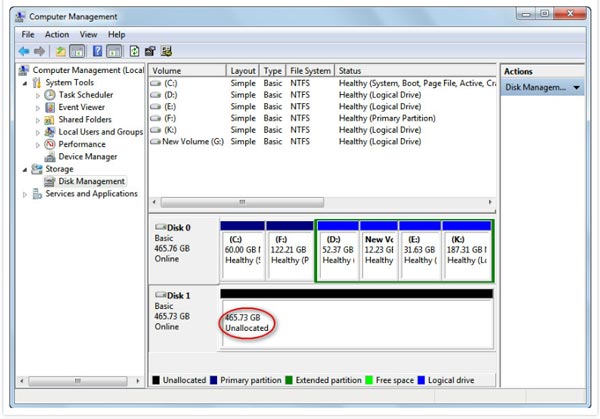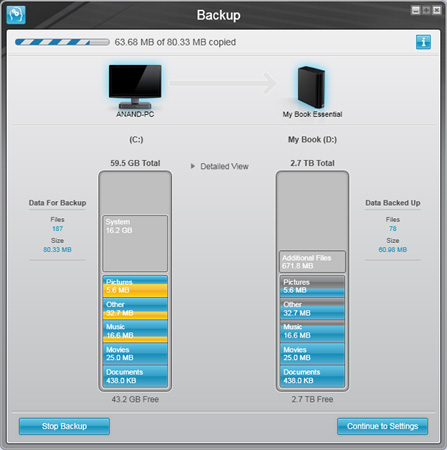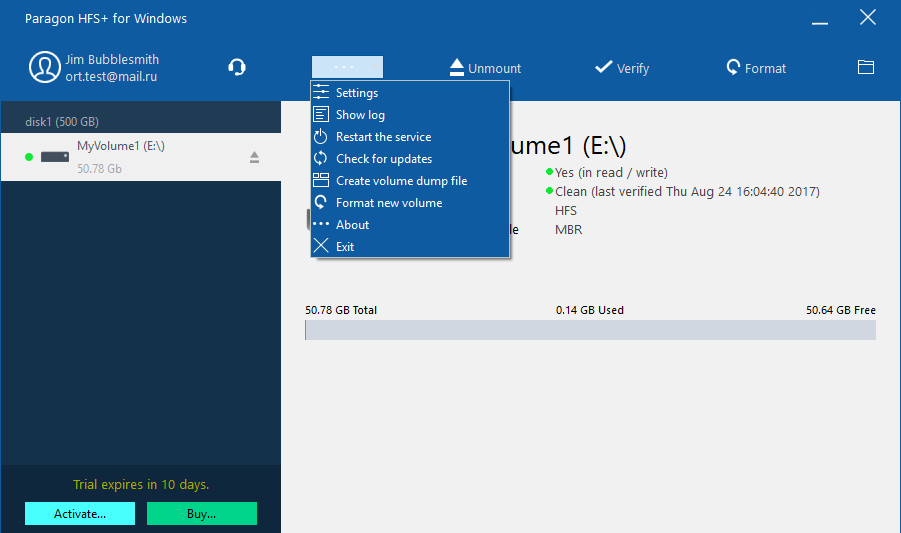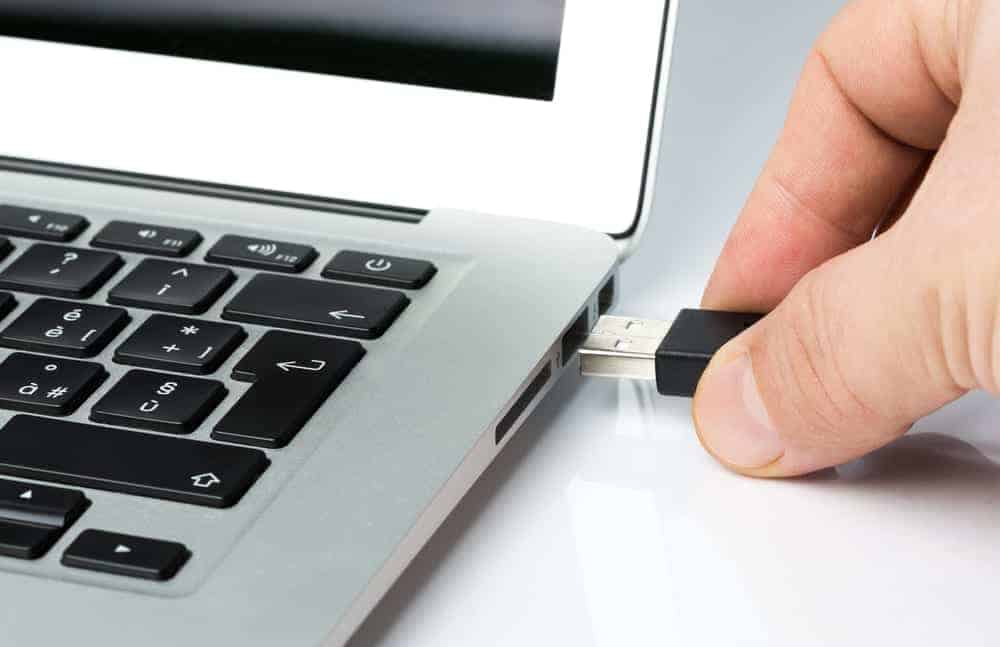'Hey there, have you ever met this issue that the memory card suddenly disappeared from the mobile phone? The memory card suddenly becomes invisible and cannot be detected by mobile and PC. I'm now having this issue on my phone that my memory card fails to show up and it cannot be detected by my computer either. This is why I post my question here. If you know how to fix my problem, help me. Thank you.'
- Maxtor Ntfs Driver For Mac Windows 7
- Maxtor Ntfs Driver For Mac Catalina
- Maxtor Ntfs Driver For Mac Os
However, it is possible that they are the causes of your hard drive not showing up problem. If the driver you use is outdated or problematic, you need to disable or uninstall it. If you are not familiar with the process, use professional driver tool to help you get rid of the worries. Create a WBFS, NTFS or FAT32 partition on the device, and load a game that is known to work onto the device. Connect the device before turning your Wii on, to be safe. Enable any relevant 'Disk mode', 'USB storage mode' etc. Supported on Intel based Mac's only. Paragon Driver for macOS (10.10 to 10.15) This driver provides write access for Seagate external drives in Mac OS without having to reformat.
Does your mobile memory card suddenly disappear from your phone? Does your phone fail to read the card and the computer cannot detect it either? Don't just let all your valuable data disappear from your corrupted memory card. You can fix and repair your corrupted memory card which fails to show up or cannot be detected in mobile/PC without losing any data by ease now. How? Follow the instructions here below to find fixes.
How to Repair the memory SD card not showing up/not detected error
Whenever your memory card, like SD card, fails to show up or cannot be detected by mobile/PC, don't rush to format it. Your very first step should always be to stop using the device immediately. Then, your next move is to find a solution or method to repair or fix the undetectable or failed memory card or other storage devices. How? Here you'll find several methods offered by professional administrators and reliable websites to repair corrupted, not detected/recognized or failed memory cards.
Method 1. Update memory card driver to make memory card show up
When a memory card driver is outdated, it may not be able to function or work normally. Then the mobile phone or computer cannot detect or recognize it. You can follow the steps below to update your memory card driver and fix 'memory card fails to show up' in mobile or PC error.
Step 1. Insert your memory SD card to a card reader and connect it to your PC.
Step 2. Open 'Computer' and choose 'System Properties'.
Step 3.In the taskbar on the left, click 'device manager' and next to 'Universal Serial Bus controller' click '+ (plus)'. Then you'll see a yellow exclamation mark.

Step 4.Right-click and choose 'update driver software'.
Step 5. Click 'Search automatically for driver software online'...
Wait patiently and let the driver to be installed and reboot your computer. Now you can reconnect your memory card to your PC to check out whether it can be recognized or not.
Method 2. Run CHKDSK to fix the memory card error
When the memory card fails to show up and cannot be detected by your mobile phone or PC, go to Disk Management to check if it is detected. If it shows up there but cannot open, run CHKDSK command to fix internal errors so to make memory card readable again.
Let's see the detail steps:
Step 1. Click Start and go to Control Panel.
Step 2. Click Administrative Tools and then click Computer Management.
Step 3. When the window opens, click on Disk Management and then find the device in the drive viewer.
Step 4. Press Win+R > Type: cmd and hit Enter.
Step 5. Type chkdsk D: / f and hit Enter. (D is the drive letter of your memory card)
If you don't have any technical know-how and want to minimize data risks, using third-party software could be a better choice. The Command line is suitable for computer professionals since wrong commands can cause severe problems. Therefore, we strongly recommend you try an automatic command line alternative.
EaseUS Tools M is a practical computer fixing tool that is safe and light-weighted. It's a perfect alternative to CHKDSK command. Use this one-click tool to solve your computer issues.
To fix file system error or disk error:
Step 1: DOWNLOAD EaseUS Tools M for Free and install it.

Step 2: Open the software and select the 'File showing' option.
Step 3: Choose the drive and wait for repairing. After the operation completes, click the 'View' button to check the drive.
By doing this, you'll be able to access your memory card and read data on it again. If not, try the second time with the different command: chkdsk D:/f /offline and hit Enter.
Memory card damaged or corrupted issue is responsible for most of the not detection problem, and you might need more solutions to repair corrupted sd card.
How to restore data from inaccessible SD card before formatting
After making an undetectable memory card show up on your PC, don't rush to insert it into your mobile phone. In order to make sure everything will work fine in the memory card, it's highly recommended that you format it. But before formatting, we'd like to suggest that you restore all valuable data from the memory card in advance, with the help of professional data recovery software.
- If you have found that some important data was lost on the memory card which was undetectable or you still cannot access to important data on the memory card, don't worry and your best shot is to let professional data recovery software help. If you prefer a free method, EaseUS Data Recovery Wizard Free Edition will help you restore up to 2GB of data with ease.
- If your files and data are more than 2GB, you may choose EaseUS Data Recovery Wizard with 24*7 online support service to get all your data back.
Step 1. Select the memory card and scan
Connect the memory card to your computer and launch EaseUS card recovery software on your PC. Click 'Scan' to start looking for your lost data.
Step 2. Wait for the scanning process to finish.
After the scanning process, you can check and filter wanted files in this program. Click 'Filter' if you are looking for a specific file type.
Step 3. Recover wanted files.
You can directly double-click the files to preview and see if the files are all right. After this, you can choose wanted files and click 'Recover' to restore them to a secure location on your PC or other external storage devices.
How to format a corrupted SD card
After following the previous two steps, if you still cannot use the memory card properly, don't worry. You can format the memory card to the NTFS file system or FAT32 file system to reuse it again.
Step 1. Click My Computer/This PC > Manage > Disk Management
Step 2. Right-click on the memory card with the issue, and choose Format.
Step 3. Select a file system and perform a quick format.
Now you can move and store the found data onto the memory card to continue using those data and insert it into your mobile phone to expand storage space again.
Summary :
External hard drive not showing up? Windows doesn't recognize external hard drive? How to make such drives appear in Windows so as to access the files in it? In this post, we show you the most feasible solutions as well as more approaches that could help you recover data from external hard drive not appear.
Quick Navigation :
While scanning forums, we find so many users are bothered with the external hard drive not showing up issue. Here is one typical case we extract from ccm.net:
Q: Seagate external hard drive not showing up in my computer
My 320 GB Seagate external hard drive is detected but not showing up in my computer. In cmd> diskpart> list volume it does not show up. In Device Manager it gets detected. In Disk Management it shows up as 'unallocated'. If I initialize it, will I lose all data on the drive? It had 4 partitions. In My Computer also it does not show up. Even BIOS recognizes it. What to do? I don't want to lose any data on the drive. If I initialize it in device manager will I lose data?
Are you also troubled by hard drive not showing up? Have you got the effective workaround? If not, we give you 10 possible reasons as well as solutions to help you address this issue.
A USB flash drive may also fail to be recognized by Windows 10, but don’t worry, you can fix the problem and recover data from it in most cases.

You might also be interested in Hard Drive Space Is Missing? Take These Ways to Find It out
Case 1. The hard drive is not initialized

This usually applies to new hard drive not showing up. If you are using a brand new hard drive, please check out if this hard drive needs initializing. You may go to Windows Disk Management and have a check. If Disk Management shows the disk as 'unknown/not initialized' and pops up a window asking you to initialize it, this new hard drive really needs initialization before you can use it. Then, you will have to create new partitions on it to make the new hard drive appear on computer.
To make things easy, use MiniTool Partition Wizard to help you. Detailed steps are shown below:
Step 1. Run MiniTool Partition and choose Create Partition.
In this main interface of this free partition manager, distinguish the new hard drive by viewing the hard drive information. Since a new drive has no partition, please select the unallocated space and choose Create Partition from the action panel.
Step 2. Customize the new partition.
In the pop-up window, specify the partition label, partition type, drive letter, file system, cluster size, and partition size. Then click OK.
Step 3. Click Apply on the top left corner to start.
When you have created new partitions on the new drive, go to File Explorer to check. These should remove new hard drive not showing up error.
Case 2. The hard drive has no drive letter
External hard drive not showing up also occurs when the partition on the external hard drive has no drive letter. To make the hard drive show up, you just run MiniTool Partition Wizard and add a drive letter to it.
- At the disk map, select the partition that has no drive letter and choose Change Drive Letter from the action panel.
- In the pop-up window, drop down the drive letter box and choose a drive letter you like. Then press OK button.
- Back to the main interface of MiniTool Partition Wizard, Click Apply on the tool bar to put this operation into effect.
Case 3. Hard drive is hidden
If the hard drive is hidden by some partition manager, it won't appear in File Explorer. However, this time you cannot fix this issue by simply add a drive letter to it. You should use that specific partition manager or MiniTool Partition Wizard to unhide that partition.

Maxtor Ntfs Driver For Mac Windows 7
But how do you know the hard drive is hidden or not? Usually, hidden drives also have no drive letter, but cannot be fixed by adding a drive letter. You can open Disk Management, right-click the partition that has no drive letter, and see whether the feature 'Change Drive Letter and Path…' is greyed out.
If this feature is greyed out indeed, you can use MiniTool Partition Wizard to help.
- In the main interface of MiniTool Partition Wizard Free, select the hidden partition and choose Unhide Partition from the action panel.
- Select a drive letter from the pop-up window and then click OK. Step 3. Press Apply at the tool bar.
Case 4. Partitions are lost
If all partitions on the external hard drive are lost due to some reasons like virus attack and corrupted partition table, the external hard drive not showing issue occurs. In this case, the first trying is to recover all lost partitions by using MiniTool Partition Wizard Pro (not supported in the Free Edition).
Step 1. Go to Partition Recovery feature.
Run MiniTool Partition Wizard to the main interface. Then right-click the external hard drive and choose Partition Recovery from the tool bar.
Step 2. Choose scanning range.
Select the scanning range such as the full disk, the unallocated space only or specify the scanning range and click Next. It is recommended to choose 'Full Disk' or 'Unallocated Space' if you do now know the specific starting LBA and ending LBA for the lost partitions.
Step 3. Set the scanning range.
Choose Quick Scan first. If this does not work for you, the go back to choose Full Scan.
Step 4. Check all partitions you need.
After a while, MiniTool Partition Wizard will list all partitions it has found. Here you can double-click a partition in the list to check the files in it. After confirmation, check all partitions you want to restore. Please note that partitions not checked will be lost and MiniTool Partition Wizard cannot help you that time.
Step 5. Confirm the operation by hitting Apply.
If MiniTool Partition Wizard fails to find the lost partitions for you, you can try professional data recovery software which helps recover data from lost partitions. Luckily, MiniTool Partition Wizard Pro Ultimate just comes with such a powerful function. And you may just follow the guide below to have a try.
Step 1. Go to Data Recovery.
After installing this data recovery software, run it to get the main interface. Then right-click the partition of the external hard drive to choose Data Recovery.
Step 2. Check files you need.
MiniTool Partition Wizard will immediately start the scanning process and list the found files as well. During this process, you can unfold each partition folders to check what files are the one you need. Please make use of the Preview feature to help you determine when it comes to TXT files and images. However, to get the best disk recovery result, it is recommended to wait for the completion of the scanning.
Step 3. Save files.
Tick the ones you need and press Save to store the selected files to a safe location. Note that you should choose another disk instead of the external hard drive to be recovered.
When you have finished data recovery, you can recreate new partition on the drive to cope with hard drive won't show up issue.
Case 5. Unsupported or RAW file system
If the external hard drive has unsupported files system or hard disk become RAW, the partition bar won't show up in Windows File Explorer. You can only see the drive icon and drive letter there. If you try to access the drive, Windows requires formatting.
To fix this issue, you need to recover data from the external hard drive first, and then reformat the hard drive with FAT/NTFS file system. Please refer to Case 4 and use MiniTool Power Data Recovery (Damaged Partition Recovery) to help you recover data. Then use MiniTool Partition Wizard Free Edition to do the formatting.
Case 6. Drive not enabled in the BIOS
If hard drive is not showing up in Disk Management and Device Manager, it may be because it is not enabled in System Setup (BIOS). Some motherboard manufacturers disable unused ports in the BIOS by default, which is the common reason for the 2nd hard drive not showing up in Windows 10/8/7. You will need to enter BIOS to verify their current states and make sure all hard drives are enabled. Note that different computer manufacturers have different methods to enter system BIOS, please check your system documentation for specifics.
Case 7. Faulty cable or port
If the data cable is damaged or the connection is incorrect, the BIOS will not detect the SATA cables and can sometimes fall out of their connection. Be sure to check your SATA cables are tightly connected to the SATA port connection. The easiest way to test a cable is to replace it with another cable. If the problem persists, then the cable is not the cause of the problem.
Case 8. Troubleshoot drivers
Usually, Windows offers hard drive drivers and the manufacturer of your SSD may also have released some drivers to support your disk. However, it is possible that they are the causes of your hard drive not showing up problem. If the driver you use is outdated or problematic, you need to disable or uninstall it. If you are not familiar with the process, use professional driver tool to help you get rid of the worries.
Case 9. Virus attack
Some malware or viruses can lead to hard drive not showing up issue. It is possible that there are such malware or viruses on your computer. In this case, please run security software on your computer to scan out and remove these malicious programs. Then, check if Windows doesn't recognize external hard drive issue still persists.
Case 10. Faulty hard drive
If you have completed the above checks and the external hard drive is still not showing on your computer, you should send the hard drive to repair center and check whether it fails. If it is still in the warranty, please proceed to begin a warranty replacement.
We also recommend reading our guide Quick Fix 'SSD Not Showing up' in Windows 10 without Data Loss.
Maxtor Ntfs Driver For Mac Catalina
Summary
Above are the top 10 situations as well as the solutions for new hard drive not showing up/external hard drive not showing up. You may just have a try and see if they are helping. We hope you will never take the last one. If you have any questions or better suggestions, let us know by tying them in the comment section below. Or you can contact us via [email protected].
External Hard Drive Not Showing Up FAQ
- Check if the hard drive appears in Disk Management and all the partitions do have a drive letter.
- Check if the hard drive is properly installed.
- Check if the hard drive is BIOS detected.
- Connect the hard drive to anther interface or another computer.
- Check if the hard drive is physically damaged.
- Check WD external hard drive in Disk Management. Do all the partitions seem normal?
- Try another USB port or another computer.
- Troubleshoot the driver issue.
- Format the hard drive.
Maxtor Ntfs Driver For Mac Os
- Run diskmgmt.msc. In the pop-up window, you will find all disks connected to your computer.
- Open This PC on Windows 10, then you will see all the partitions on your hard drives are shown up there. Be aware that only FAT and NTFS partitions can be accessed normally.
